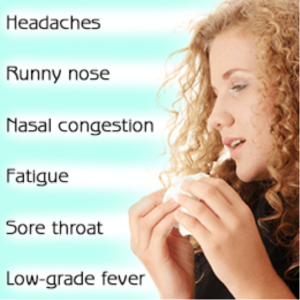During summer and on those very hot days it is marvellous to go to the beach, relax at the pool side, have a barbeque or even picnic out with friends and family but then you may notice that your nose starts to run, you suddenly develop a headache or you feel stuffy.
Sinuses, which are paired air spaces connected to your nose, is lined with very delicate skin called the mucus membrane. The mucus membrane may then become inflamed by many things like bacteria, colds and flu’s, allergies or even a fungus invasion. We start to feel all those dreadful symptoms when these sinus spaces are blocked, causing mucus build up and pressure.
The most common culprit of summer sinus problems is allergies and hay fever. We don’t hear enough about how pet hair, pollen, dander, dust and dust mites and even milk or how certain food allergies cause sinus problems. But what else about those hot days cause our sinuses to go ballistic?
One often hears about sudden extreme temperature changes causing increased sinus pain and a stuffy or runny nose, but how?
There are millions of tiny hair like structures called cilia that make up the mucus membrane, which lines your nose and sinuses. These cilia work together as a broom, helping to get rid of stagnant mucus that may block the sinuses. Your mucus membranes prefer a moist warm environment as opposed to it being very cold or very hot.
On hot summer days the air is very dry causing the mucus in your nose to become thick and sticky. This makes it difficult for the cilia to move or “sweep” the excess mucus out. This thick mucus then blocks the sinuses. When mucus flow is interrupted or blocked, it often becomes hard in nature and causes pressure and congestion. The pressure and the congestion then cause you to experience pain, stuffiness and headaches.
Know the difference:
Viral sinus infections
They are the most common type of sinusitis. Viruses that cause the common cold are usually the reason for the sinus infection. The symptoms of a viral sinus infection typically last up to seven to ten days. The first few days your symptoms will worsen and after about the fifth day you may start to see improvement. These types of sinus infections generally go away on their own with rest and vitamin C. The symptoms you may experience while having a viral sinus infection are headaches, congestion, low fever, nasal discharge, and trouble sleeping.
Bacterial Infections
If your cold is lingering around and does not runs its course naturally you may actually have a bacterial sinus infection. Learn the signs that indicate your cold may be a bacterial sinus infection. Viral sinus infections do not require antibiotics. When you experience sinus infection it will more than likely be a viral sinus infection.
Bacterial sinus infections are less common than viral sinus infections. It may be difficult to tell the difference between bacterial and viral sinus infections because they share common symptoms.
In some cases a viral sinus infection can develop into a bacterial sinus infections. This occurs when bacteria multiplies in fluid-filled sinus pockets. Bacterial sinus infections may also resolve on their own but may require antibiotics to fight off the bacteria.
Know when the signs or symptoms of a viral sinus infection has increased to a bacterial sinus infection are a noticeable increase in the severity of symptoms or failure to get better after seven to ten days.
Some common symptoms of bacterial sinusitis are worsening congestion, more severe facial pain, and thickening or increase of nasal discharge. Bacterial sinus infections can also return shortly after your symptoms have healed, making you think, why do I keep getting sinus infections? If your nasal discharge or mucus is thick, dark, and/or greenish-yellowish, you may have converted to a bacterial sinus infection. Evaluation by your doctor can determine whether or not you have a bacterial or viral sinus infection. If your symptoms show no sign of improvement after ten days it is safe to say you have developed a bacterial sinus infection.
Summer Sinus Health Tips
- Try to Avoid Pollen: Pollen levels are usually highest in the morning so try and stay indoors. Use a HEPA filter, reduce carpeting, and try and vacuum the interior of your home often. Keep your windows closed during especially bad sinus days.
- Make sure you always have a Saline Nasal Spray: One of the most helpful precautions to ward off colds are to keep your nasal passages moist.
- Consider Nasal Irrigation: Cleaning out the nasal passages helps remove bacteria, pollutants and other irritants that can lead to sinus pain and infection. The simplest way is to lean over a sink and use a neti pot to run warm saline into and out of your nasal cavity. You can also use a squeeze bottle which is specifically designed to irrigate the nasal passages.
- Avoid nasal irritants: The membranes that line the nostrils and sinuses are very sensitive and can be damaged from an array of irritants. Two common irritants are tobacco smoke and chlorine. Additional items to avoid are exhaust, mold, and smoke of any kind.
- Be prepared when flying: The dry air and poor interior conditions in an airplane cabin are a perfect area for germs and bacteria to collect. Drinking lots of water and sporadically spraying inside your nose with a saline solution can help fight against these conditions.
